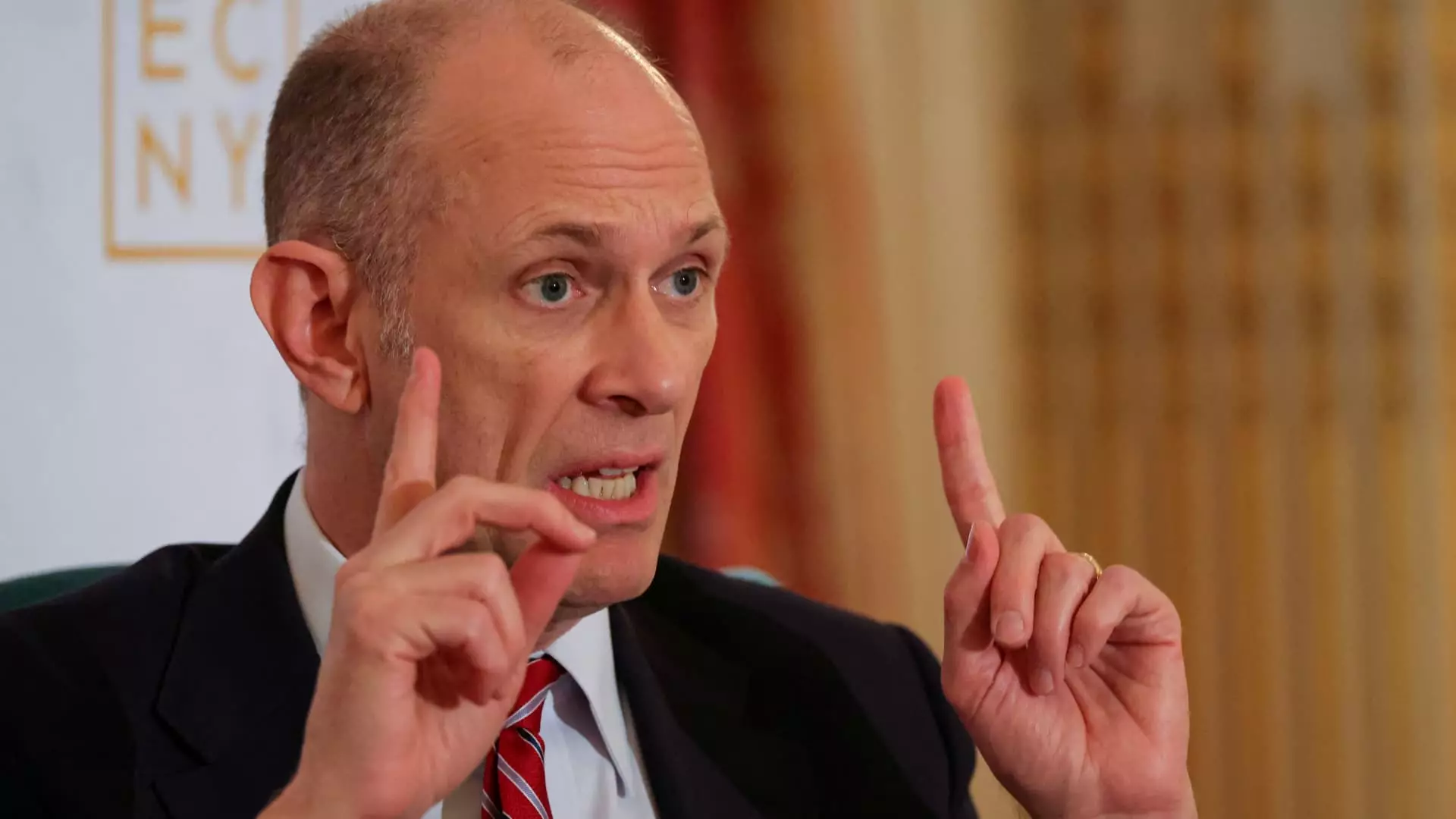In the chaotic landscape of U.S. economic policy, the recent comments by Chicago Federal Reserve President Austan Goolsbee reveal the precarious balancing act facing the Federal Reserve. Goolsbee’s insights, shared during a CNBC interview, articulate the mounting tension created by President Donald Trump’s latest tariff threats. These threats and their potential repercussions have not only complicated monetary policy decisions but have also delayed necessary actions regarding interest rates. Such uncertainty has become a hallmark of our current trade environment, underscoring an economic climate that is anything but stable.
Goolsbee’s admission that the bar for determining interest rate changes has been raised serves as a candid acknowledgment of the broader implications tariffs can have on inflation and employment. By suggesting that the central bank’s capacity to maneuver is constrained, Goolsbee signals a recognition that influencing economic growth amidst unpredictable trade policies is incredibly challenging. The specter of stagflation looms ominously; it is precisely this situation—an unholy marriage of stagnant growth and rising prices—that should send chills down the spine of policymakers. For a central banker, navigating through a quagmire of tariffs and trade disputes is the epitome of a double-edged sword.
The Market Reaction: A Reflection of Anxiety
Trump’s recent proposal to impose 50% tariffs on select imports from the European Union and a 25% tax on iPhones not manufactured domestically generates immediate backlash in the markets. Such volatile calls heighten uncertainty and provoke panic among investors who are already jittery due to fluctuating fiscal policies. The reactive nature of the markets underscores how deeply interconnected trade policies and consumer sentiment are, as these announcements have tangible short-term implications.
While the impact of a more expensive iPhone may seem trivial in a broader economic context, it symbolizes the far-reaching effects of a hardline trade approach. The market trembles, oscillating between recovery potential and utter despair, and this instability can easily morph into self-fulfilling prophecies of recession. It’s baffling that in an age where information and data are readily accessible, executives at the highest levels would engage in such reckless saber-rattling that plummets consumer confidence.
The Fed’s Path: Seeking Clarity Amid Confusion
As a voting member of the Federal Open Market Committee, Goolsbee grapples with the tug-of-war between optimistic forecasts and the harsh realities of fluctuating trade policies. While he remains cautiously hopeful for sustained economic growth, the Fed must tread carefully. The committee’s projections, updated in March, hinted at two potential rate cuts later this year, but that future must now contend with the repercussions of ongoing tariff disputes. Goolsbee’s reluctance to commit to any predetermined course of action reflects an acute awareness of the complexities stemming from rapidly changing conditions.
This cautious approach is fundamentally sound; even slight misjudgments at this juncture could result in adverse long-term consequences for the economy. As Goolsbee noted, the Fed’s overnight borrowing rate has remained steady, but the pressure to adjust rates will only intensify as the implications of these tariffs become clearer. The conundrum lies in whether the Fed can truly navigate the choppy waters without sacrificing its fundamental principles of promoting full employment and stable inflation.
The Future: Optimism or Despair?
The pessimistic view of the economy is undeniable amid these tumultuous interactions between the executive branch and global commerce. The stakes are incredibly high, and the risks are palpable. While Goolsbee embodies a measure of optimism, projecting that things could stabilize in the long run, we cannot ignore the precarious position created by anxiety-riddled markets and hostile trade practices.
The intersection of fiscal policy with daily lives underscores the broader societal implications of tariffs. As consumers, we find ourselves held hostage to decisions made in the corridors of power, with every increase in prices potentially disrupting our economic well-being. Tariffs do not merely serve as abstract concepts in economic theory; they resonate through every layer of our economy, influencing everything from job security to our purchasing power.
The path forward is muddled with complexities that demand clear thinking and decisive action. For Goolsbee and the Federal Reserve, each meeting is now an exercise in strategic patience as they wait for clarity in an increasingly unclear economic landscape. This is not merely a question of monetary policy but a lesson in resilience amid uncertainty, demanding that we confront the reality that tariffs may not serve the intended purpose of economic strength but rather weaken the foundation upon which progress is built.


Leave a Reply